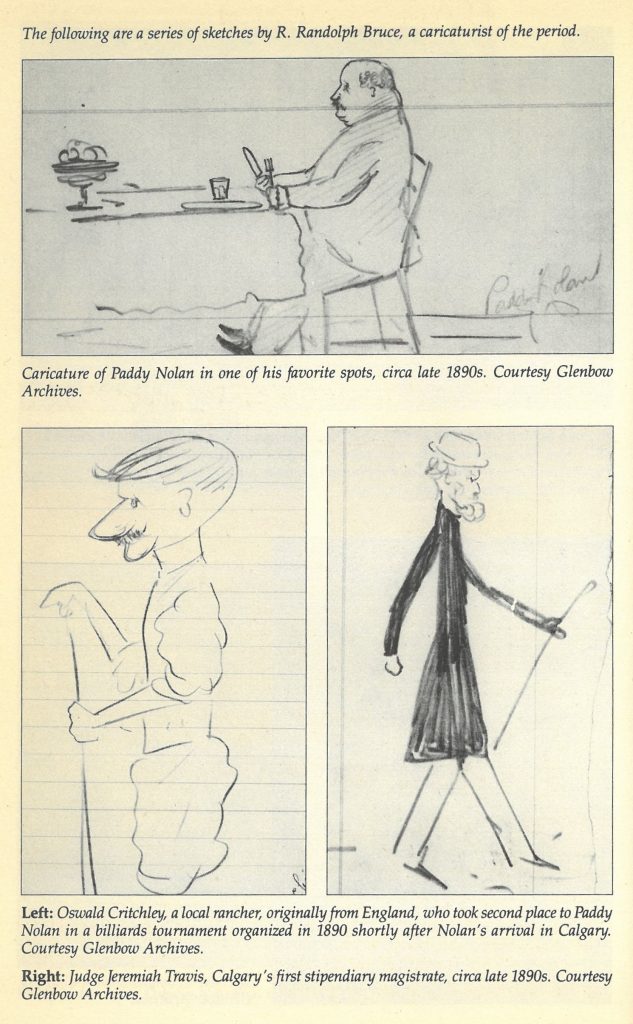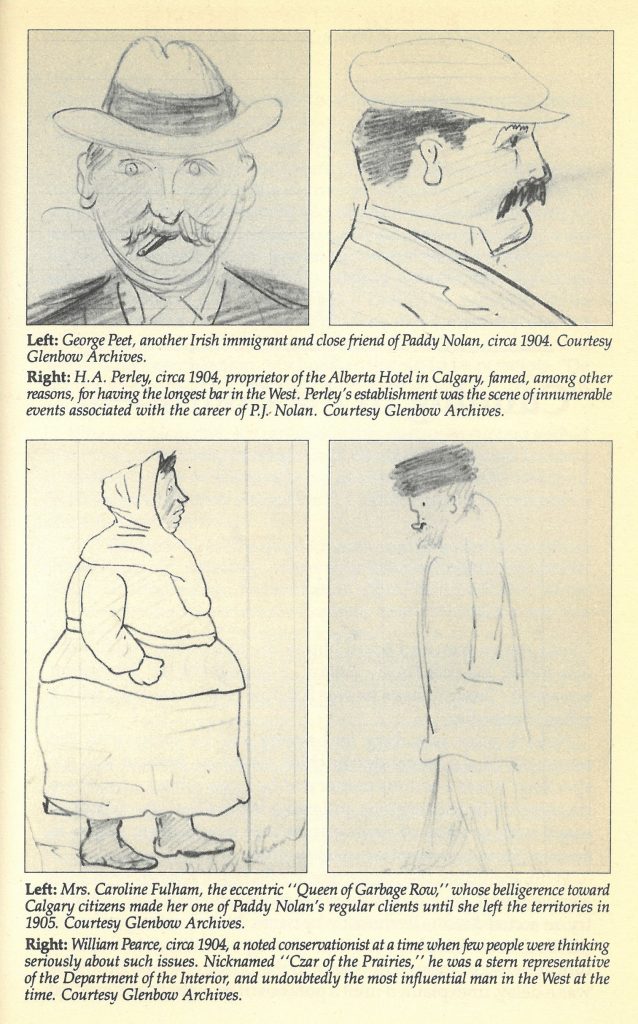By Brenda McCafferty, LASA Archivist
Profile of a Colourful Irish Advocate of Calgary’s Early Days
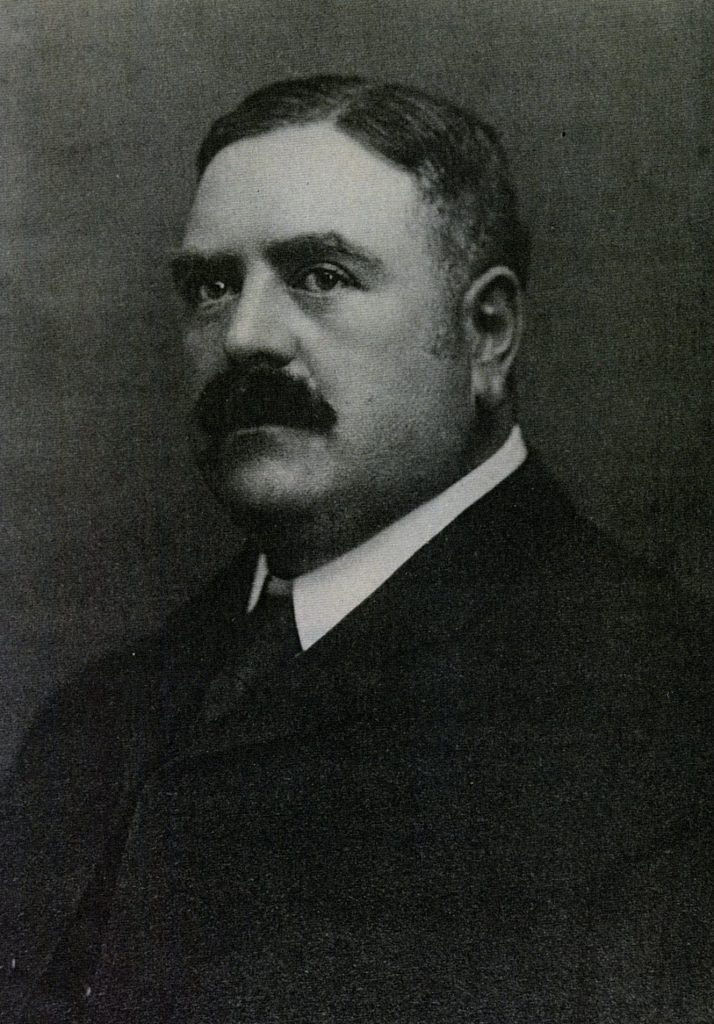
Patrick James Nolan, K.C. (1862-1913)
Glenbow Archives, photo #NA-1371-1
Patrick James Nolan aka “Paddy” was born on St. Patrick’s Day, 1862 (1864 by Canadian accounts), and grew up in Limerick Ireland.[i] He was the third son of a flour and feed merchant. Paddy was educated at Dublin University Trinity College obtaining his bachelor of laws and winning the gold medal for oratory. He was called to the Irish Bar in 1885 and practised with the Munster Circuit for four years before arriving in Calgary at age 25. The choice of Calgary as a destination stemmed from a Limerick association with the Costello family, who had arrived in Calgary a few years ahead of him. Nolan was called to the Bar of the North-West Territories by Judge Rouleau on December 13, 1889, and is entered number 77 in the NWT roll book. He soon afterwards became the junior law partner of Thomas Brown Lafferty. Since Lafferty’s brother James D. was mayor of Calgary (fifth mayor), the partnership flourished in its early years.
As a city builder, the young lawyer’s participation in civic life was most notable in his first 15 years. Nolan played soccer, cricket, and billiards and mingled in several social circles. He enjoyed amateur theatre and operettas making his acting debut in “Gilbert and Sullivan’s Trial by Jury in 1890 and played a comic in several local productions. Nolan helped organize the Calgary Literary and Debating Society and the Calgary Amateur Dramatic Club in 1892. He was a founding member and first secretary of the Calgary Board of Trade (1890-1894), auditor of the City (1893-1895), and editor of the Calgary Herald newspaper (1900-1903).[ii] Nolan was born with a nose for news and the gift of telling a good story. Many of his good stories were picked up while travelling about the west in connection with his work at the Bar.” [iii] He was also a member of the University of Alberta Senate and one of the first organizers of the university in Edmonton.
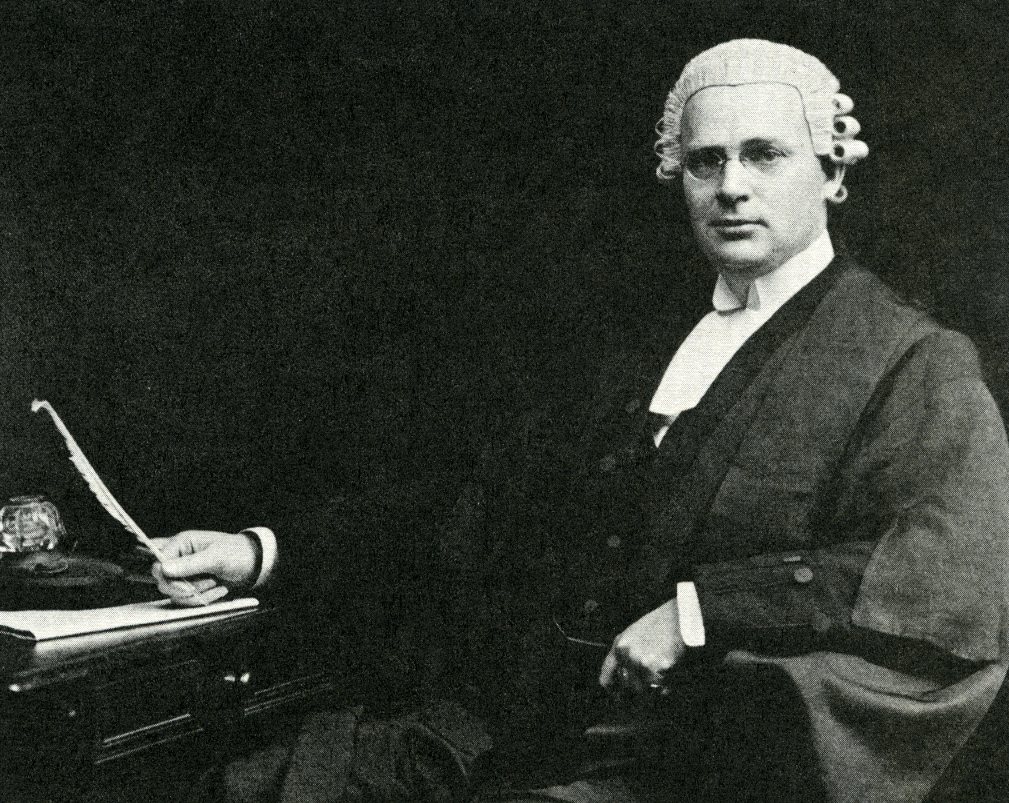
The Hon. Viscount R.B. Bennett (who became Canada’s 11th Prime Minister, 1930-1935), once said of Paddy Nolan: “he was the greatest jury lawyer he had ever met”.
Nolan and Bennett were fierce adversaries in the courtroom. Of their matchups in court, the Calgary Eye Opener editor Bob Edwards often journalized the accounts. Nolan was famously annoyed by Bennett’s displays of pretention in the courtroom. As one story goes, Nolan arrived before the Supreme Court of Alberta with a minimum of legal references, prepared to depend largely upon his broad general knowledge of law and common sense. Bennett, on the other hand, came weighted down with imposing law books, giving the impression of proficiency. In The King v. Clarke (1907), as Bennett was about to address the court, he turned to call commandingly upon his student assistant for further reference material: “Boy, bring me Phipson on evidence.” A few minutes later, he called again: “Boy, give me Kenny on Crimes.” Nolan broke up the court when rising to present his side of the case, turned to a young clerk, saying in terms that thoroughly disrupted courtroom decorum: “Boy, bring me Bennett on Bluff.”[iv]
P.J. Nolan specialized in criminal defence work but also dabbled in actions for libel and slander, breach of promise of marriage, damage claims for personal injuries, and cattle wrestling. He was primarily a jury advocate. [v] Nolan was known to be unpretentious and the idol of the junior Bar, always going out of his way to give a junior an opportunity to show his stuff. A criminal trial with the defence in the hands of Paddy Nolan was never a small affair. It would attract a capacity house no matter how ordinary the charge.[vi]
Sketches from Grant MacEwan’s book, ‘He Left Them Laughing When He Said Good-bye: The Life and Times of Frontier Lawyer Paddy Nolan (source relied on heavily to comprise this portrait.)
A larger-than-life character both physically and figuratively, his magnetism and ability to mend fences with even the toughest of adversaries in the Calgary Bar Association was legendary. A Calgary Bar Association event at the Ranchmen’s Club in 1911 saw he and Judge William Legh Walsh by the end of the evening dancing and singing arm in arm – an evening talked about for years afterwards. He formed a brief partnership with Frank E. Eaton (Nolan & Eaton) before he died of which Nolan was famously quoted as saying “Drinkin and Eatin” would have been a better name for the law firm.[vii]
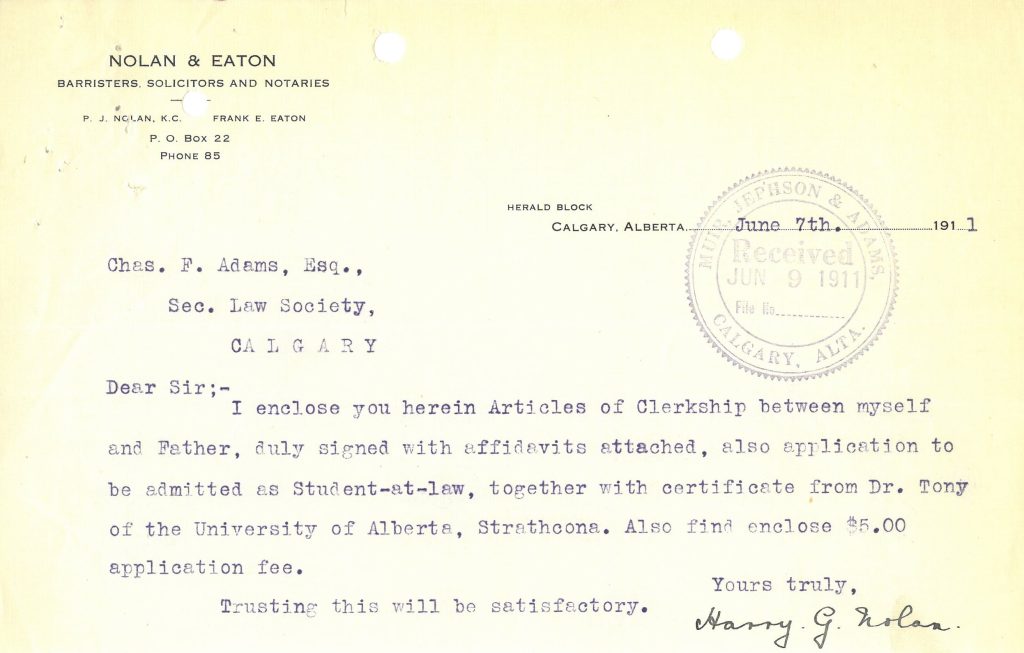
Robert Chambers Edwards, 1864-1922
Of his fondness for libations, Nolan’s friendship with Robert Edwards, editor of The Calgary Eye Opener newspaper, was well-known.
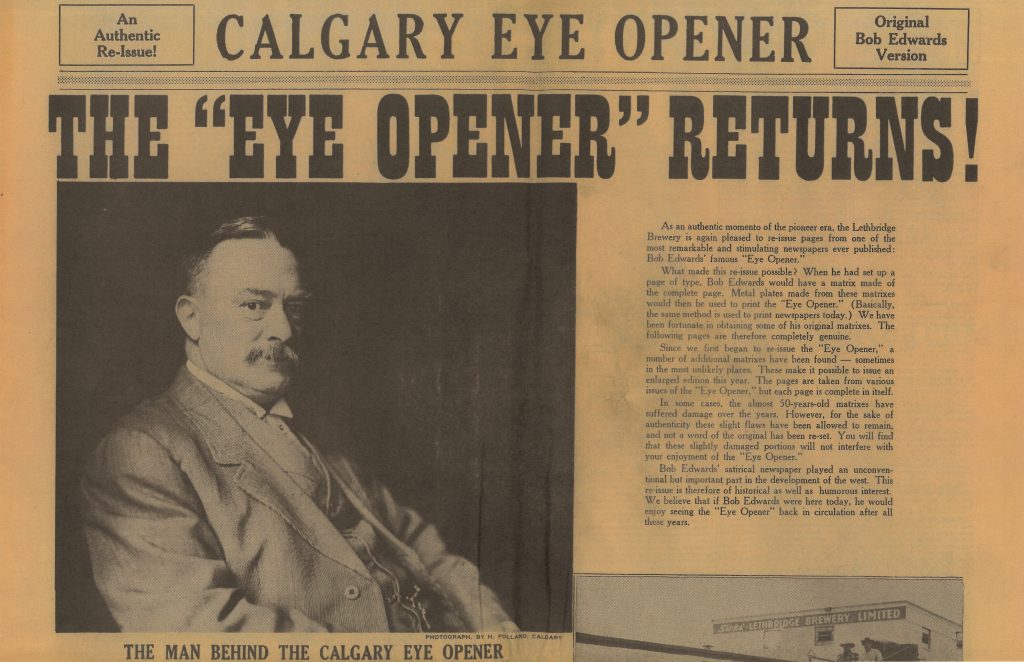
In 1902, Bob Edwards (1860-1922) published the first edition of The Eye Opener, a weekly newspaper of local news and humour, in High River, Alberta. After several Edwards moved to Calgary, continuing the paper there. During this period, the paper shifted toward satirical humour, creating serials of fictionalized characters mocking political and public figures of Western Canada. One of Edwards’ favorite targets was the CPR and their lawyer R.B. Bennett, K.C.
Bob Edwards probably knew Nolan better that anybody outside Paddy’s family. They were frequently found in each other’s company, joking and carousing. Always the warm-hearted friend and defender, Nolan represented Edwards in a famous early Calgary libel case brought by Edwards against the Calgary Daily News, editor Daniel McGillicuddy.
The Honourable Arthur L. Sifton, K.C.
Calgary Prosecutor, Chief Justice of NWT, Alberta’s second Premier
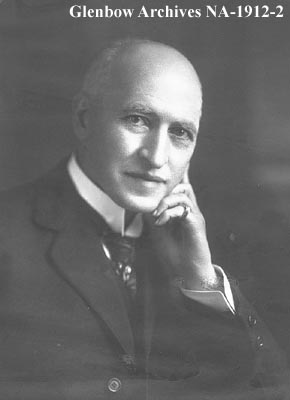
Another close associate of Nolan was Arthur Sifton. For many years Paddy Nolan and the Hon. Arthur L. Sifton occupied adjoining offices. Nolan appeared for the defence and Sifton for the prosecution in many important criminal trials like the famous Ernest Cashel murder case. Often, they could be found in each other’s quarters, leaning back in the old office chairs with their feet on the window sills, talking as if they had not a care in the world. But beneath their pleasant chatter there was a subtle undercurrent. They were sizing up each other in the hope that one might reveal to the other what he had up his sleeve.[ix]
Sifton was a prohibitionist. Paddy Nolan was not. Their difference in lifestyle did not stand in the way of their friendship and in one instance, was exploited for the benefit of Sifton. Sifton, a political candidate hoped to get the miners’ votes and sent Paddy in his stead to the mining district to have a few drinks and gain favour. The tactic worked brilliantly and come election day Sifton polled an overwhelming majority in the mining town.[x]
Death of Paddy Nolan:
P.J. Nolan died suddenly on February 11, 1913, from an internal hemorrhage. His final resting place is in Banff.
In wake of the terrible news, Calgary’s City Hall flag was reduced to half-mass in homage to the popular local figure. Some stores closed, lawyers closed their offices, and judges of the Supreme Court of Alberta delivered eulogies. Mr. Justice Stuart gave a thoughtful address:
“The death of Mr. Nolan has left a strange void in the whole community and in a special way it has left a void in the hearts and minds of all who have been associated with him in the administration of justice in this province.”
A day or two after Paddy Nolan’s death, the Calgary Herald summed him up well:
“His remarkable skill as a barrister, his marvelous and never-failing wit, his pungency of criticism and his warmth of praise, have been known these many years. Stories of him were told around the world, each on testifying to the breadth of his Irish kindness, and to the marvelous flow of his Irish humour.”
P.J. Nolan was survived by his widow Mary Elizabeth Lee, the daughter of an early pioneer whom he married in 1892, and one son Henry (Harry) G. Nolan born May 5, 1893.
The Honourable Henry (Harry) Grattan Nolan, C.B.E., M.C.
(1893-1956)
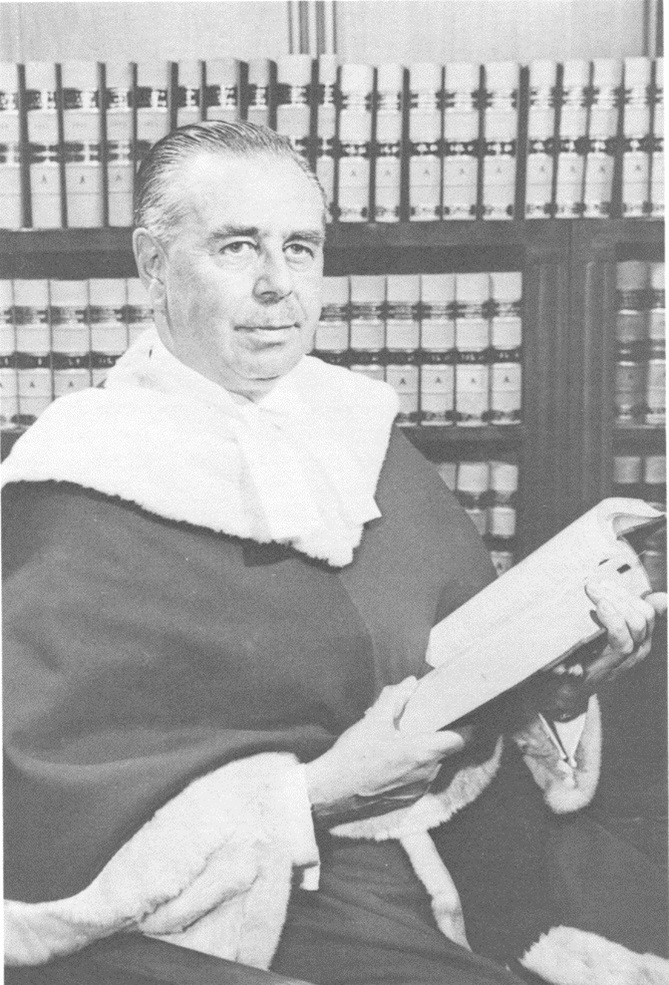
Biography of H.G. Nolan from J. Herbert Laycraft:[xi]
In May 1910, H.G. Nolan enrolled in the combined Arts and Law Program at the University of Alberta and began articles with his father as a student-at-law in 1911. After his father’s death in 1913, his articles were transferred to John M. Carson.


At the University of Alberta Henry Nolan excelled, becoming President of the Student’s Union in 1914 and achieving his graduate student-at-law designation. His articles with Carson were interrupted when he was appointed the Rhodes Scholar in 1915 – the first time an Albertan (Calgarian) had received that honour. His scholarship to Oxford was delayed on account of his military service in the Great War where Mr. Nolan served bravely and was awarded the military cross for valour in 1918.
Following WWI, H.G. Nolan returned to Oxford to complete his Rhodes Scholarship, graduating in Law with a master’s degree. In 1922 he returned to Calgary and resumed articles at the MacLeod Dixon law firm. Unpleased there, Nolan spoke to R.B. Bennett who obtained a place for him at his law firm. On Feb. 13, 1923, R.B. Bennett presented Nolan to the AB Bar. He remained with the Bennett firm for the next 33 years, through its various incarnations (besides a side excursion during and after WWII), until his appointment to the Supreme Court of Canada in 1956.
During the Second World War Nolan entered the Judge Advocate’s branch of the army at first in Western Command and later became vice-advocate general in Ottawa with the rank of Brigadier. At the conclusion of hostilities, Nolan was appointed as Canada’s Prosecutor to the International War Crimes Trial in Japan (“the other Nuremberg”). He completed this service in 1947 and returned to Calgary. In 1951, a young Herb Laycraft (who would go on to become Chief Justice of Alberta, 1985-1991), entered the law firm Nolan, Chambers, Might, Saucier, Peacock & Jones, working closely alongside Harry G. Nolan first as a student-at-law and later as a junior lawyer. Together they tackled two landmark oil and gas / Alberta land and mineral right cases: Borys v. C.P.R. (1951) and Turta v. C.P.R. (1953).
The Hon. J. Herbert Laycraft, O.C., worked closely alongside Harry G. Nolan as a student-at-law (depicted below) and later as a junior lawyer at the Nolan, Chambers, Might, Saucier, Peacock & Jones law firm, 1951 to 1956.
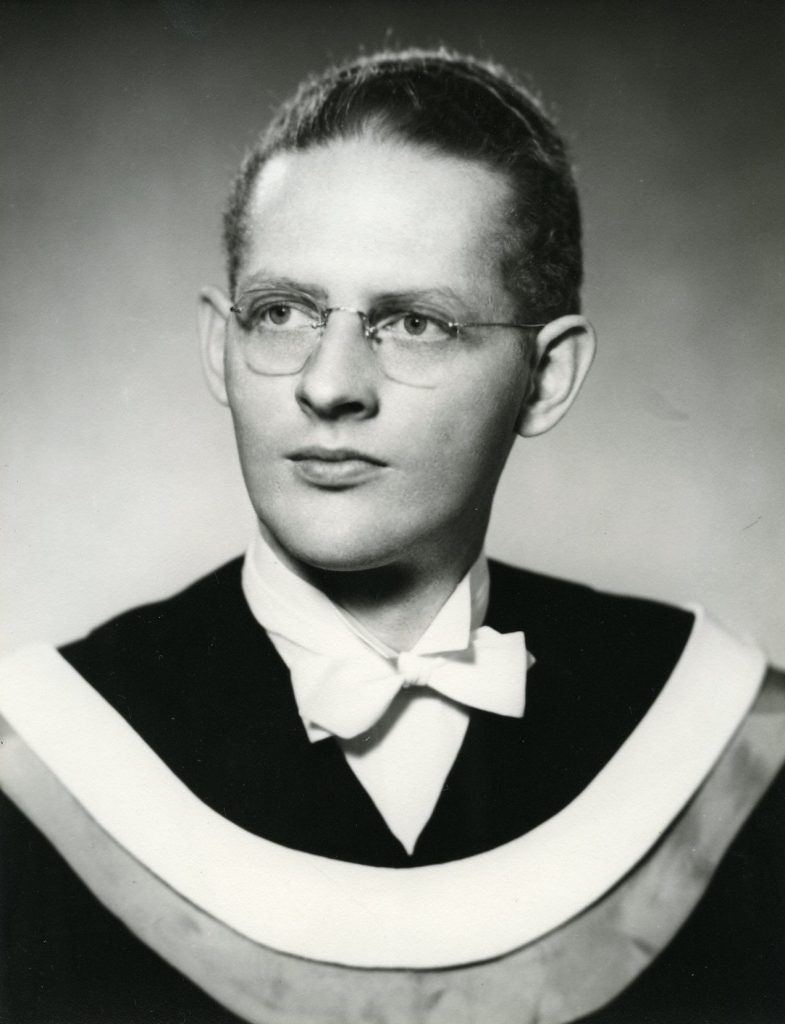
In 1956 Mr. Nolan was appointed a Judge of the Supreme Court of Canada, leaving Calgary after more than 30 years of service to the profession. Unhappily, his time on the Supreme Court of Canada was brief. He died suddenly in 1957. His death like his father before him, was a tremendous shock and his funeral in Banff a very sad occasion.
Bibliography:
Ferguson, Kenneth (ed.), ‘King’s Inns Barristers 1868-2004’, The Irish Legal History Society: Dublin, 2005, p. 265
Glenbow Archives – Nolan family fonds (M1762) biographical sketch
Knafla, Lou, Canadian biographical dictionary entry, pp. 782-783
LASA – Calgary Bar Association, oral history transcript of Mrs. Doris Nolan, fonds 09-00-05, file 64
LASA library clipping file, ‘Paddy Nolan’
LASA – Law Society of Alberta, member file of Henry Grattan Nolan, (05-00-01, file 471, 1911)
Stubbs, Roy St. George, ‘Lawyers and Laymen of Western Canada,’ The Ryerson Press: Toronto, 1939
[i] Ferguson, Kenneth (ed.), ‘King’s Inns Barristers 1868-2004’ Dublin: The Irish Legal History Society (2005), p. 265
[ii] Knafla, Lou, Canadian biographical dictionary entry, pp. 782-783 (from LASA library clipping file)
[iii] Stubbs, Roy St. George, ‘Lawyers and Laymen of Western Canada’, The Ryerson Press: Toronto, 1939, pp. 154-155
[iv] MacEwan, Grant, ‘He Left Them Laughing When He Said Good-bye: The Life and Times of Frontier Lawyer Paddy Nolan’, Western Producer Prairie Books: Saskatoon, 1987, p. 66
[v] Stubbs, Roy St. George, ‘Lawyers and Laymen of Western Canada’, The Ryerson Press: Toronto, 1939, p. 155
[vi] As above, p. 156
[vii] As above, p. 173
[viii] LASA – Law Society of Alberta, member file of Henry Grattan Nolan, (fonds 05-00-01, file 471, 1911)
[ix] Stubbs, Roy St. George, ‘Lawyers and Laymen of Western Canada’, The Ryerson Press: Toronto, 1939, p. 159
[x] As above, pp. 169-170
[xi] See LASA J. Herbert Laycraft, fonds 20-00-00 (Acc. #2007-015), containing speaking notes from the H.G. Nolan LASA bust unveiling ceremony held on January 30, 2007
[xii] LASA – Law Society of Alberta, member file of Henry Grattan Nolan, (fonds 05-00-01, file 471, 1911)

